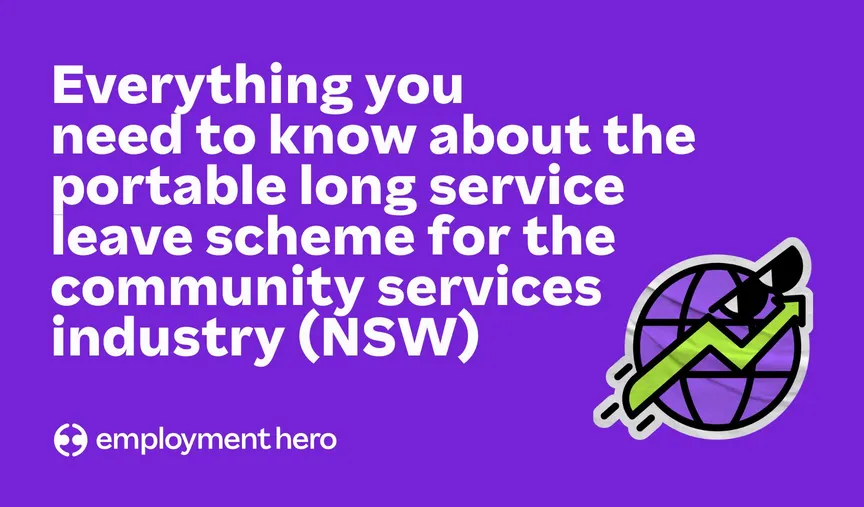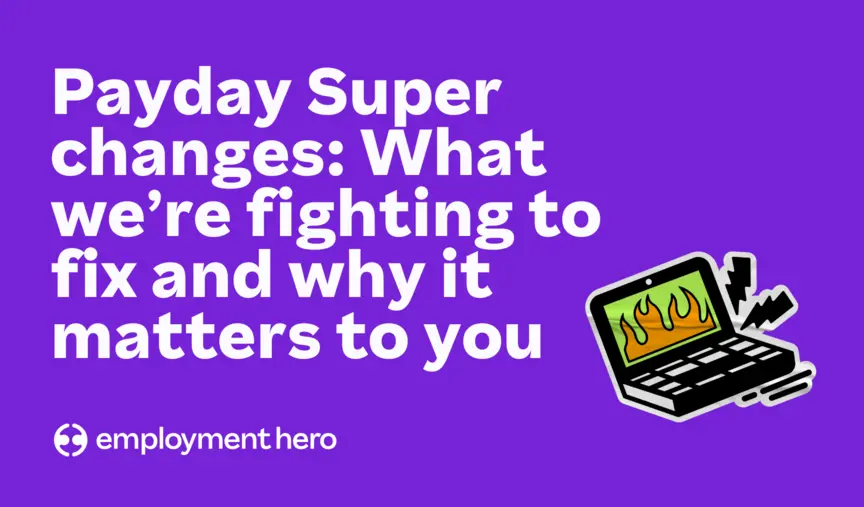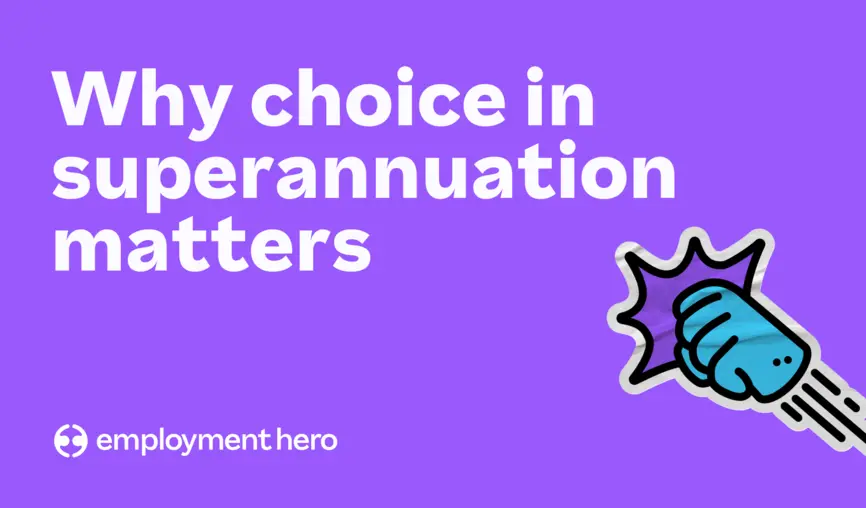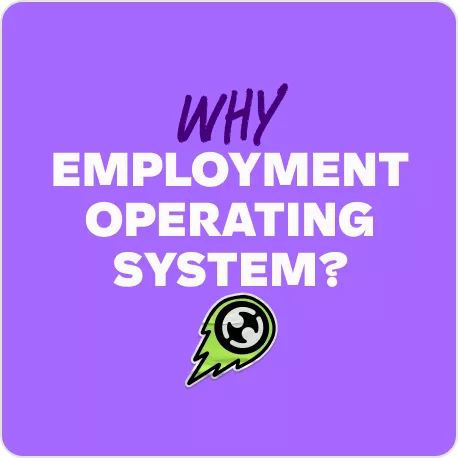R U OK? Day
This year, R U OK? Day falls on Thursday, 12 September. Learn how to support your team with these easy steps.

This year, R U OK? Day falls on Thursday, 12 September. The national initiative encourages Australians to ask their friends, family, colleagues or acquaintances a very important question — are you ok?
Each day, eight Australians will take their own life. This affects not just their immediate friends and family, but causes a ripple effect of destruction that can take decades to fade out. Mental health affects all of us at one point or another – 1 in 5 people will experience mental illness in their lifetime – and yet there is still a stigma that surrounds asking for help.
R U OK? Day does an amazing job of normalising a conversation that can sometimes be difficult to have. However, there are still those who question whether the workplace is the right place to have that conversation – and they couldn’t be more wrong.
On average, Australians spend 37 to 42 hours per week at work. It might not sound like a lot, but ask yourself – how are you spending the other 126 hours of the week? 49 are spent asleep, leaving 77 for everything else: kids, shopping, downtime, appointments. Life gets in the way, whittling the time for meaningful conversations down further and further. And that’s if you’re statistically average.
The fact is, 8.85 million Australians spend the majority of their time at work, making it one of the most important places for people to connect with one another, or at the very least, learn to recognise if their colleague is struggling.
R U OK? Day is an opportunity for Australian employers to not just educate their employees about the importance of checking in on their colleagues, but also promote a culture where employees feel safe enough to answer honestly. So as an employer, what steps can you take to ensure your employees are mentally well?
Be informed
According to the Black Dog Institute, one in five Australians aged 16-85 will experience mental illness in any year. What’s more concerning is that an estimated 45% of Australians will experience mental illness at some stage in their lifetime.
The pandemic made things worse again, with headspace.org.au finding that 74% of young people reported that their mental health got worse after the outbreak. And while Covid-19 isn’t as stress-inducing as before, there was little respite before rising interest rates and a rental crisis stepped into its place.
According to Matthew McLean from Suicide Prevention Australia, 46% of people were experiencing high levels of cost-of-living distress, with suicide numbers increasing last year. Not only is the cost of living causing mental health issues, it’s also a barrier when it comes to seeking help.
Despite the numbers saying otherwise, 1 in 2 managers believe their employees are unaffected by mental illness. Employers should make it a priority to be properly informed about mental illness and acknowledge that:
- Mental illness is more common than people realise.
- It is caused by a number of different factors, including genetic, biological, social and environmental factors.
- People who are mentally ill are not able to ‘pull themselves out of it’.
- With proper treatment, the vast majority of mental illness cases are treatable.
By understanding the above, employers are able to empathise with their employees, inspiring them to establish policies and programs to create a mentally healthy workplace. For instance, consider downloading our ‘know the signs’ mental health in the workplace poster to help recognise when someone is struggling mentally. They’re also better positioned to lead by example; visible and active support of mental wellbeing from leadership will prompt greater engagement from employees.
What’s the benefit?
Under the Work Health and Safety Act (2011), employers must protect the mental and physical wellbeing of their employees. Physical wellbeing makes sense when you consider the massive amount of litigation that surrounds injuries sustained at work in the past 30 years. Now, mental injury is now proving just as litigious as physical injuries – and rightly so.
Employers have more incentive than self-preservation to develop mentally well workplaces. When you account for absenteeism, productivity loss, high turnover and compensation, Australian businesses lose $10.9 billion per year due to undiagnosed mental illnesses.
On the flip side, research shows that workplaces that promote mental wellbeing are more productive, attract and retain better employees and can reduce turnover by up to 51%. What’s more is that a recent study of Financial Times Stock Exchange 100 companies found that those who address mental health and wellbeing in their annual reports were 3 times more profitable than those who didn’t. The reality is that mentally well workplaces are good for both employees and a business’ bottom line. To learn more about occupational stress and its effects on employee health, check out our detailed insights here.
How can you help?
Now that you know why you should invest in the mental health of your employees, how can you put a plan into action? Believe it or not, investing in the mental wellbeing of your employees doesn’t cost the earth. For the most part, all it will cost is the time to implement it.
1. Have a mental health and wellbeing policy
Having a mental health and wellbeing policy shows a level of transparency that few other initiatives can provide. It’s an opportunity to communicate to all employees that their mental wellbeing is a priority, that you will provide them with support should they need it and that they do not need to fear the stigma of mental illness. Take a look at our guide to boosting employee wellbeing at work here.
2. Get an employee assistance program (EAP)
EAPs aren’t as expensive as you might think. Not only do they provide confidential, 24/7 qualified counselling for every employee, it’s also a clear sign that you support your employees’ mental wellbeing.
Research shows that having an EAP doesn’t just benefit those who use it. It also increases morale, productivity and loyalty for those who don’t. Find out more Employment Hero’s EAP.
3. Create social groups
Supporting the mental health of your employees isn’t just about providing them with the services they need when they’re mentally unwell. It’s also about building a workplace with meaningful connections.
After the pandemic, social isolation is a growing concern for many, and for some, work is the only place they get to interact with others. With many of us still working from home, it’s becoming harder to connect. But just like we’ve found new ways to collaborate on projects, we can find new ways to connect virtually. Need some inspiration? Take a look at our 39 free online team building games for remote teams here.
Host virtual chit chats using Zoom that cater to different interest groups. Whether it’s a book club, Friday night drinks or a cook-along, all of these activities can be replicated online. Employees that are better connected are also more collaborative and work better as a team. Consider holding local active group activities too, like a morning walking group or a competition for achieving daily steps.
4. Promote learning
A common trait of mentally well workplaces is the opportunity for personal and employee coaching and development. Without the opportunity to upskill or learn new things, employees can quickly become despondent in their role. With other external factors, this can be a huge contributor to poor mental health.
If you’re already using Employment Hero, our learning management system (LMS) has thousands of courses for employees to upskill or reskill. Maintain an open dialogue with your employees and ask them what areas they’d like to improve on, or where they want to be in the next year or two. To help refresh your team’s mindset and bust any bad vibes, check out our top tips here.
Remember, that when you factor in the cost of recruitment with the lost productivity of an empty role, it can cost 50% of a hire’s annual salary to replace them. That $800 course is looking pretty good now, isn’t it?
Take a look at our career progression plan template here.
5. Provide positive reinforcement
Reward and recognition is a huge part of engaging your employees, but it’s also really beneficial to people struggling with their mental health. When providing feedback to employees, always use positive reinforcement when possible.
This also creates a culture where employees feel psychologically safe and that their mistakes aren’t going to get them fired. Workplaces that are psychologically safe are actually more successful, as it spurs innovation and employees are more likely to take (calculated!) risks.
Use our Psychological Safety Survey Template to see how your employees are feeling currently.
6. Nurture a number of wellbeing champions
A number of companies are now training employees to act as mental health champions. These champions identify themselves as open to speaking about mental health and connecting with those that need someone to speak to.
R U OK? Day is an amazing initiative that highlights the importance of a single conversation can have on someone’s life. But it’s important to remember that R U OK? encourages Australians to ask that question every day of the year.
For workplaces that want to ensure their employees are happy, healthy and productive, employee wellbeing programs can have a huge effect – both financially and culturally. For more tips on creating and implementing an employee wellness strategy that works, check out our guide to boosting employee mental wellbeing.
Related Resources
-
 Read more: NSW Government introduces Portable Long Service Scheme for the Community Services Industry
Read more: NSW Government introduces Portable Long Service Scheme for the Community Services IndustryNSW Government introduces Portable Long Service Scheme for the Community Services Industry
The NSW Government has introduced portable long service leave for the community services industry. Learn what it is and what…
-
 Read more: Payday Super changes: What we’re fighting to fix and why it matters to you
Read more: Payday Super changes: What we’re fighting to fix and why it matters to youPayday Super changes: What we’re fighting to fix and why it matters to you
Big changes are coming to how superannuation is paid in Australia. Here’s what we’re asking Treasury to seriously consider updating…
-
 Read more: Why choice in superannuation matters
Read more: Why choice in superannuation mattersWhy choice in superannuation matters
What could be coming when Payday Super hits and what Employment Hero is doing about it.












